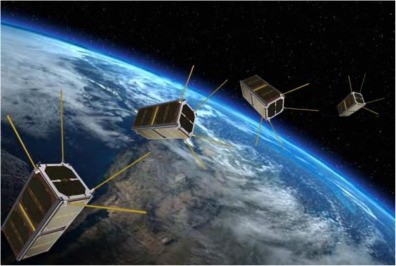In recent years, the construction industry has witnessed a surge of interest in sustainable building materials. Among these, mass timber stands out as a promising solution that not only meets the rigorous standards of military construction but also contributes to environmental conservation efforts. As the world grapples with the challenges …
Read More »Attosecond Lasers: Pioneering the Future of Ultrafast Science and Technology
Lasers have revolutionized numerous fields of science and society, serving as versatile light sources that have transformed scientific investigations and powered trillion-dollar industries. In manufacturing, programmable robotic lasers have surpassed traditional mechanical tools, offering capabilities like cutting, drilling, measuring, and even welding and peening—all from a single laser station. In …
Read More »Exploring the Depths: Unveiling the Global Marine Propulsion Engine Market
Marine transport Marine transport stands as the cornerstone of global trade, facilitating approximately 90% of merchandise trade via sea routes due to its unparalleled cost-effectiveness. At the heart of marine transport lies marine propulsion systems, which propel ships through water, ensuring safety standards for marine ecosystems while remaining economically viable. According …
Read More »Exploring Satellite Types and Their Orbits: A Journey Through Orbital Mechanics
Satellites play a crucial role in modern life, providing essential services such as communication, weather forecasting, navigation, and scientific observation. These advanced pieces of technology orbit Earth in various ways, each tailored to specific missions. Understanding the different types of satellites and their orbits, along with the principles of orbital …
Read More »Pioneering the Depths: Innovations in Underwater Power and Propulsion Systems for Long-Duration Missions
The vast underwater world holds endless possibilities for exploration and discovery. But one major hurdle for unmanned underwater vehicles (UUVs) is their limited operational time due to battery constraints. To overcome the limitations of traditional power sources and propulsion systems, researchers and engineers are delving into groundbreaking designs aimed at revolutionizing …
Read More »China Releases White Paper on Legal Framework for Counterterrorism
The Information Office of the State Council, China’s cabinet, recently released a white paper titled “China’s Legal Framework and Measures for Counterterrorism.” This document outlines China’s approach to combating terrorism and emphasizes its commitment to the rule of law. In a recent white paper titled “China’s Legal Framework and Measures …
Read More »Revolutionizing Space Security: AI-Enabled Satellite Swarms
As our reliance on satellite technology continues to grow, ensuring the security of these vital space assets has become increasingly crucial. Traditional space-based systems, often characterized by single, large satellites, are giving way to more advanced and flexible configurations. One groundbreaking advancement is the integration of artificial intelligence (AI) with …
Read More »Satellite Swarms and Formation Flying: Revolutionizing Space Missions
The increasing capabilities of Micro, Nano, and CubeSats, coupled with their short development times and reduced launch costs, are revolutionizing Earth observation missions. These small satellite missions are increasingly favored over traditional large satellites, offering flexibility and cost-effectiveness. Two primary topologies are Satellite Constellations and Satellite Formation Flying. In the …
Read More »Outsmarting the Honey Trap: Technology’s Role in Counterintelligence
The world of espionage is filled with intrigue and deception, and one method that’s been around for centuries is honey trapping. This tactic involves using romantic or sexual relationships to gain access to sensitive information. But in today’s tech-driven world, even spies are facing a new challenge: counterintelligence powered by …
Read More »Exploring the Wonders of Supersolid Materials: Properties and Applications
Introduction: In the realm of materials science, there exists a class of extraordinary substances known as supersolids. These materials possess unique properties that defy conventional understanding, opening doors to a myriad of potential applications across various industries. From their intriguing quantum mechanical behaviors to their practical uses in technology, supersolid …
Read More » International Defense Security & Technology Your trusted Source for News, Research and Analysis
International Defense Security & Technology Your trusted Source for News, Research and Analysis
